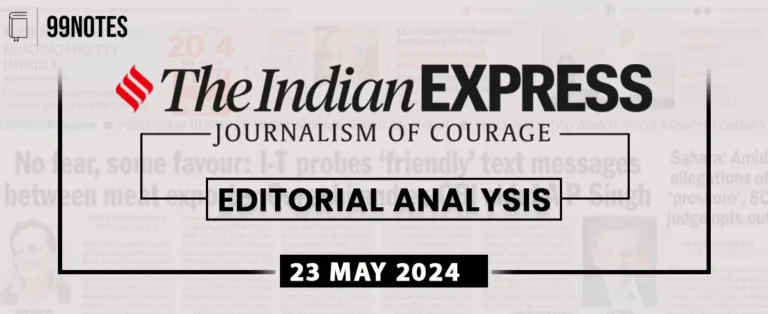22 January 2025 : The Hindu Editorial Analysis
1. Time to seize the promise of the U.S.-India nuclear deal
(Source – The Hindu, International Edition – Page No. – 8)
| Context |
|
A Transformative Agreement
- The U.S.-India civil nuclear deal was approved by the U.S. Congress in 2008 after years of negotiation since 2005.
- The deal marked a new era in the U.S.-India defense and strategic cooperation.
- It fostered trust in handling advanced technologies and paved the way for collaborations in defense, technology transfer, and intelligence sharing.
| India – US Civil Nuclear Deal (123 Agreement) |
|
Unrealized Promises of the Deal
- The expected benefits in the energy and commercial sectors have not materialized.
- The deal envisioned the construction of nuclear plants using U.S. technology, creating jobs and producing clean energy.
- Westinghouse’s plan to build six nuclear plants in India, announced in 2016, has yet to materialize.
Recent Developments in Regulatory Frameworks
- U.S. National Security Adviser Jake Sullivan announced efforts to remove barriers to civil nuclear cooperation.
- Initially, around 200 Indian entities were on the U.S. Entity List, limiting business opportunities.
- Most entities were removed post-deal, but concerns over technology leakage kept some on the list.
The Liability Risk Issue
- India’s Civil Liability for Nuclear Damage Act, 2010, placed liability on suppliers rather than operators, unlike international norms.
- This discouraged major U.S. companies like GE and Westinghouse from participating.
- To address liability concerns, India introduced an insurance scheme involving General Insurance Corporation and other government entities.
- While Russian companies accepted this arrangement, U.S. companies have not.
Challenges in Technology and Costs
- Rapid advancements in nuclear technology have created challenges for U.S. companies to meet India’s expectations.
- Cost overruns in U.S. nuclear projects have raised concerns about affordability for Indian consumers.
- Indian officials remain cautious about projects that might lead to increased electricity costs without sufficient benefits.
Need for Joint Efforts
- U.S. companies alone cannot overcome the challenges related to liability, technology, and cost.
- Collaboration between the U.S. government, Indian authorities, and nuclear companies is essential.
- Achieving the deal’s full potential could yield immense benefits, including clean energy and stronger U.S.-India ties.
Conclusion
- The U.S.-India civil nuclear deal represents a milestone in bilateral relations, but significant barriers remain.
- Resolving issues related to liability, technology, and cost is crucial to realizing its promise.
| PYQ: In what ways would the ongoing US-Iran Nuclear Pact Controversy affect the national interest of India? How should India respond to this situation? (250 words/15m) (UPSC CSE (M) GS-2 2018) |
| Practice Question: Discuss the challenges impeding the full implementation of the U.S.-India civil nuclear deal and suggest measures to overcome these hurdles. (250 Words /15 marks) |
For more such UPSC-related The Hindu editorial analysis: –21 January 2025 : The Hindu Editorial Analysis



